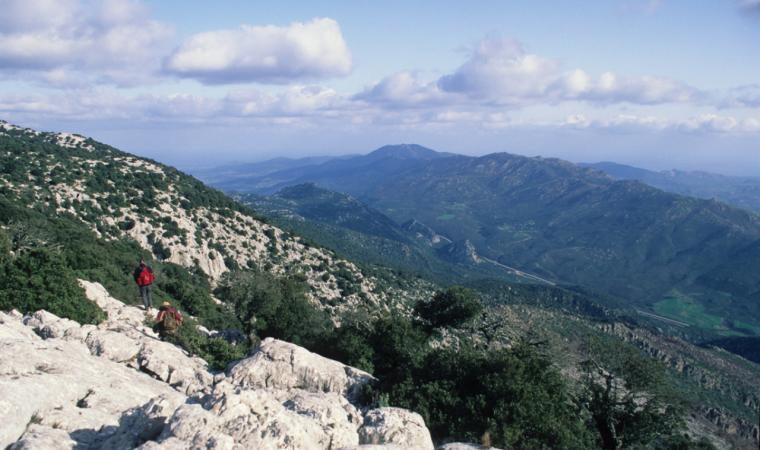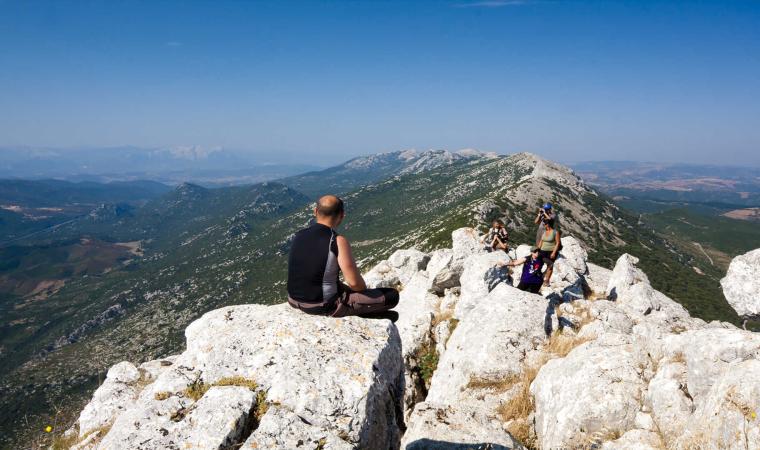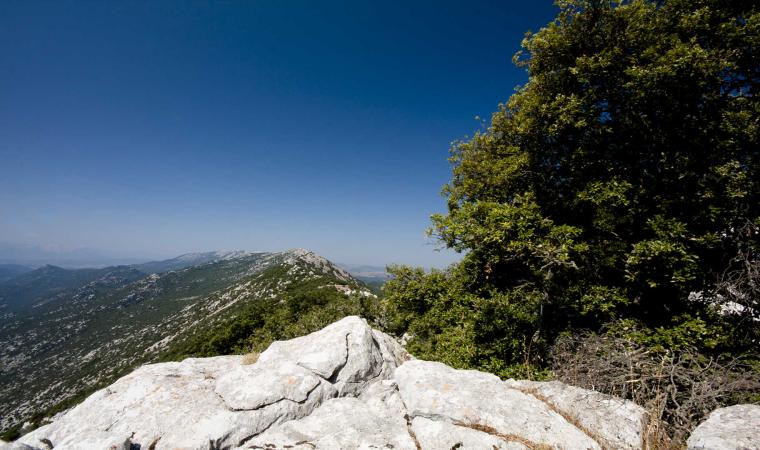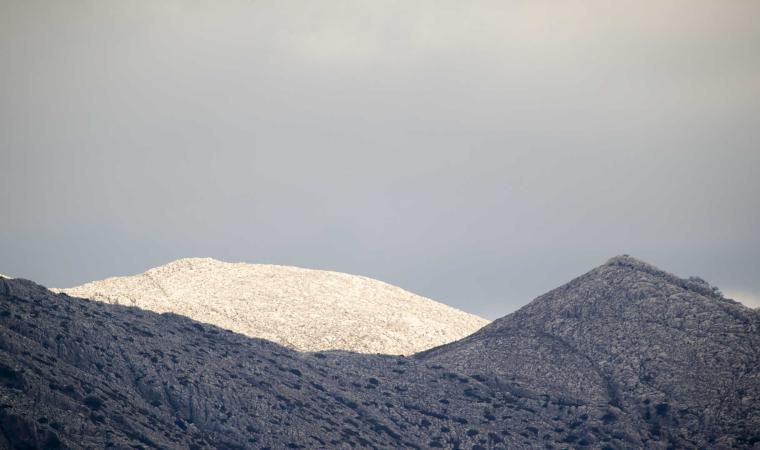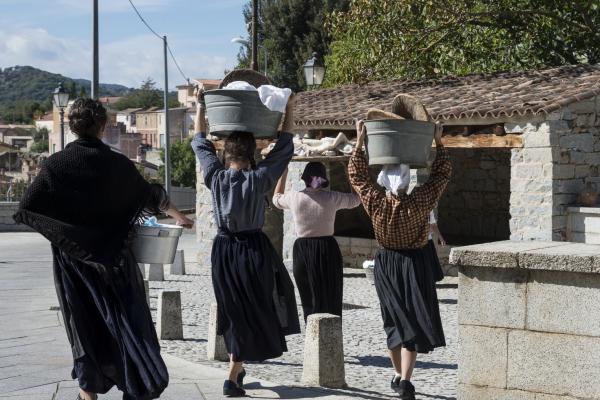Travelling along the Strada Statale 131 trunk road from Nuoro to Olbia, you will be captivated by its white majesty and its precipices. Monte Albo, which gets its name from the light colour of the limestone rocks, has an elongated ridge, of about twenty kilometres, that dominates the Baronìe sub-region. The massif, situated mainly in the territory of Lula and Siniscola and partly in that of Galtellì, Irgoli, Loculi and Lodè, is so rich in vertical gorges and caves, vertical walls and deep ravines, that it deserves the name of 'Sardinian dolomite'. The caves have often been used as places of refuge. In that of Bona Fraule, perhaps a place of worship in times gone by, iron daggers and swords were found. Many of the peaks of the limestone bastion are over a thousand metres high: the summits are Punta Turuddò and Punta Catirina, where the cave of Janna Manna opens up and is 200 metres long. The 'twin' peaks face each other and each is 1127 metres high. Between them, there is the ponor of Tumba e' Narrai.

Mountain
In the Baronìe sub-region, 'middle earth' between the areas of Nuoro and Gallura, stands an impressive limestone bastion with its white gorges, numerous caves, deep ravines and summits, giving you spellbinding views of Sardinia
In the Baronìe sub-region, 'middle earth' between the areas of Nuoro and Gallura, stands an impressive limestone bastion with its white gorges, numerous caves, deep ravines and summits, giving you spellbinding views of Sardinia
See this place because...
Amidst the evocative caves, white gorges and deep ravines, you will experience the thrill of breathtaking views, accompanied by the fragrance of the Mediterranean scrub
Pictures and videos
Nearby
Admission
Free admission
You may also like
More attractions in the vicinity
Nearby hotels and accommodations

Bed and breakfast (rental rooms)
LULA
8 km

Bed and breakfast (rental rooms)
LULA
8 km

Bed and breakfast
LULA
8 km

